The movie musical: money making or true art – or both? This was a programme to sing along to, in the company of Judy Garland and Gene Kelly, Elvis Presley and Cliff Richard. In this second instalment of Neil Brand’s brilliant three-part history, he looked at the genre from the 1940s to the 1960s, from the USA to the UK, as well as voyaging to India and China and dropping in a salut to France.
These two decades are labelled the “Second Golden Age”. We bounced straight in with images of New York accompanied by Leonard Bernstein’s euphoric post-war “New York New York”, emblematic of the reinvigorated Hollywood movie musical. Brand was an enthusiastic compere throughout, combining formidable knowledge and terrific piano playing on his Steinway as he accessibly analysed why the music – not to mention the dance – he was discussing actually worked. The clips dazzled as we swung down memory lane, Gene Kelly dancing in the rain, Julie Andrews hymning the sound of music: the choreographer Matthew Bourne told us this was the best movie musical opening ever.
The star to come who led the revolution was a young dancer from Pittsburgh, Gene Kelly
June 1942, the worst time for the world, and the Germans were supporting the musical Die Gross Liebe (The Great Love) which was passionately patriotic, and with unconscious irony riffed on the luxury of American musicals. It was a piece of extraordinary wartime propaganda, a love affair between a cabaret singer and a pilot. Evidently everybody was singing the addictive, over-the-top finale. It was stimulatingly topsy-turvy to see Hollywood being used for what we know was the wrong cause, but all too human nevertheless.
Back in America, the young Judy Garland starred in Metro Goldwyn Mayer’s Meet Me in St Louis, 1944, a family musical in glorious technicolour. The star to come who led the movie musical revolution was a young dancer from Pittsburgh, Gene Kelly; his charming widow Patricia Ward Kelly told us that Kelly went back to sports, which he loved, to find the right moves for the American male. Cover Girl from 1944 was his breakthrough movie, and dance told the story. Kelly duetted with himself using breakthrough techniques, as a vintage interview demonstrated: you just had to be an obsessive perfectionist and an original genius. 1949’s On the Town (main picture) took the action out from the studio at Kelly’s insistence, onto the streets of New York, even though it was tricky protecting Frank Sinatra from the crowds. (Pictured below, Neil Brand on the New York skyline).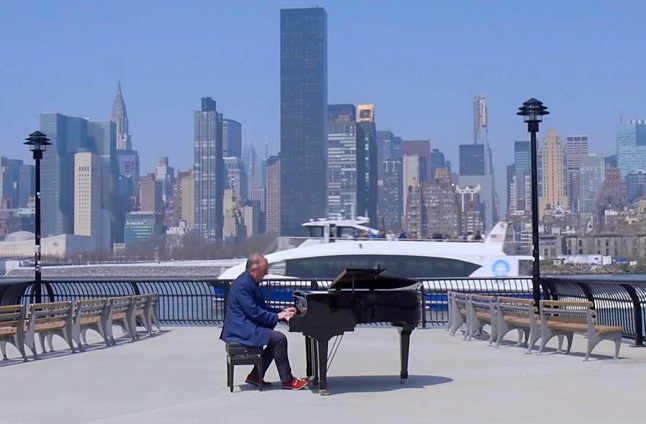 Singin’ in the Rain came along in 1952, harking back to the start of the movie musical in the 1920s. Kelly’s own favourite was the dream number “Broadway Ballet”, which he directed, composed and choreographed. Brand eulogised the musical arrangers, and literally showed us with this one how rhythm, décor and choreography work to sustain the sequence, giving us technicolour escapism at its finest.
Singin’ in the Rain came along in 1952, harking back to the start of the movie musical in the 1920s. Kelly’s own favourite was the dream number “Broadway Ballet”, which he directed, composed and choreographed. Brand eulogised the musical arrangers, and literally showed us with this one how rhythm, décor and choreography work to sustain the sequence, giving us technicolour escapism at its finest.
Thousands of miles away musical movies were flourishing in India in the 1950s, building on a new search for identity and meaning in post-colonial times. These Hindi movie musicals could be angsty and dark: Pyassa, directed by Guru Dutt who also played the leading role of the tormented poet, showed us poverty and prostitution, in black and white but with lessons from Hollywood, from tracking shots and movement through the set. Beautiful music merged with political reality infused Mother India, directed by Mehroob Khan, its heroine a single mother farmworker embodying an independent and radical spirit. It was the first Hindi movie ever nominated for an Academy award.
Back in America the twin inventions of the teenager and rock’n’roll changed everything
Further east, Shaw’s Movie Town opened in 1961 in Hong Kong, bigger than any Hollywood studio – 1,200 workers, no unions and long hours – and became the most prolific producer of movie musicals in Chinese. On the mainland, Chairman Mao and his Cultural Revolution had affected the Chinese movie musical but at Shaw Movie Town, Hollywood met Hong Kong more than halfway in OTT extravaganzas.
Back in America the twin inventions of the teenager and rock’n’roll changed everything. The star of the genre was wrapped round the star: Jailhouse Rock from 1957, featuring the King, Elvis Presley. In the UK it was Cliff Richard & the Shadows in The Young Ones from 1961. Summer Holiday two years later had the boys playing mechanics and singing the title song, as well as “Bachelor Boy”.
What is it with grease monkeys? In France, The Umbrellas of Cherbourg, 1964, was the story of another garage mechanic, directed by Jacques Demy, the everyday married once again to music. The hero and heroine sing – they don’t dance or speak: it was an opera, set at the time of the Algerian war. Brand analysed the music, from semitone to semitone, with the recurrent melody playing on the audience’s emotions. We are left to wonder whether it was the saddest happy ending anywhere, or the happiest sad ending, hankies to the fore.
Hippies, free love, protest and Vietnam characterised the 1960s, and blinkered Hollywood blinked: Camelot, Paint Your Wagon. Dance came to the rescue with Bob Fosse, who from Sweet Charity onwards made dance curiously intimate with a vocabulary of small gestures. It was a huge critical success and a commercial flop, while at the opposite end of the scale The Sound of Music, directed by Robert Wise, rolled over everything, making more money than could be imagined. Here the camera supplied the exhilaration of dance as the choreography was very simple. It was Oscar scoop-up time.
Then, in 1972, came Fosse’s Cabaret, the first ever X-rated movie musical: Kurt Weill mingled with the Great American Songbook. It was grown-up time, eight Oscars the most any movie musical had ever won. All that Jazz, Fosse’s 1979 swan song, was his choreographed delight in sexual permutations. Where do we go from here? Brand shows us next week: tune in for the final episode. Anyone for La La Land?



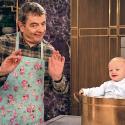






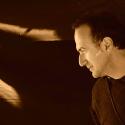
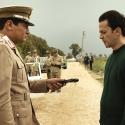


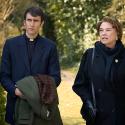
Add comment